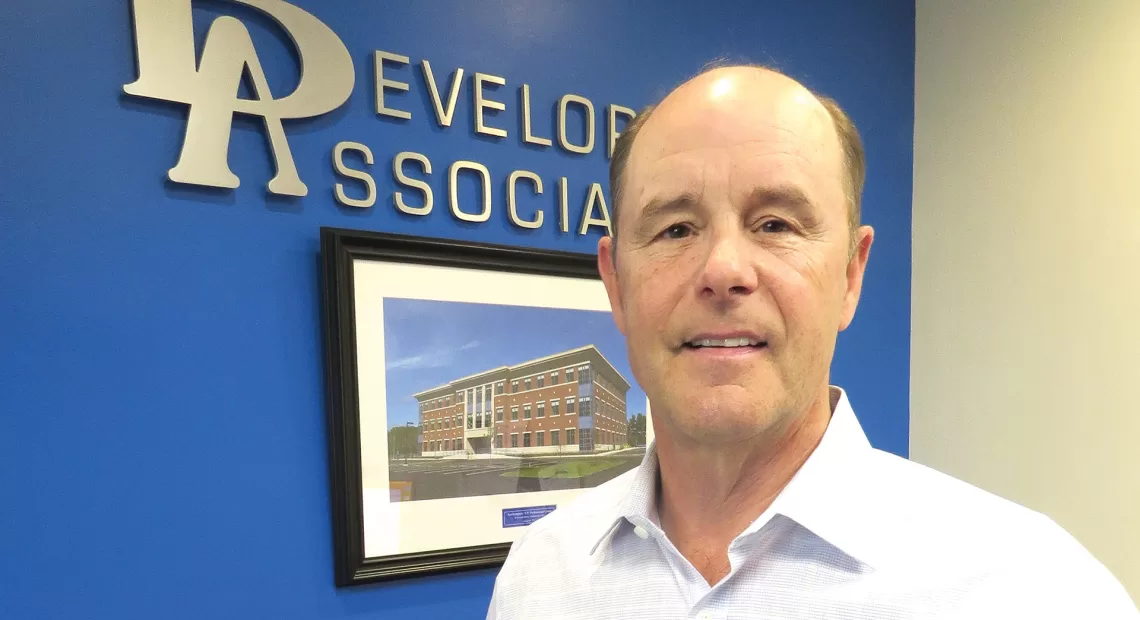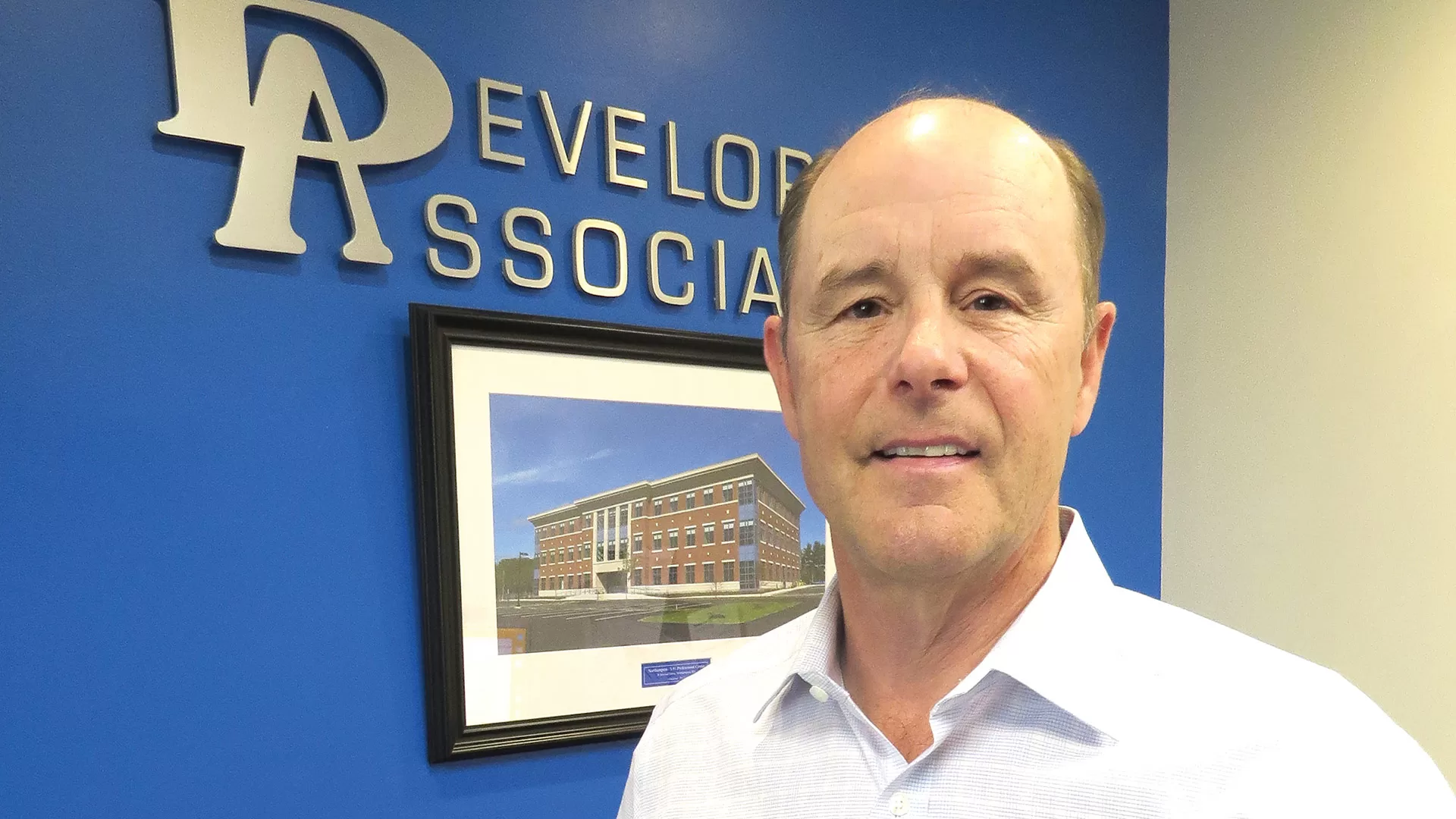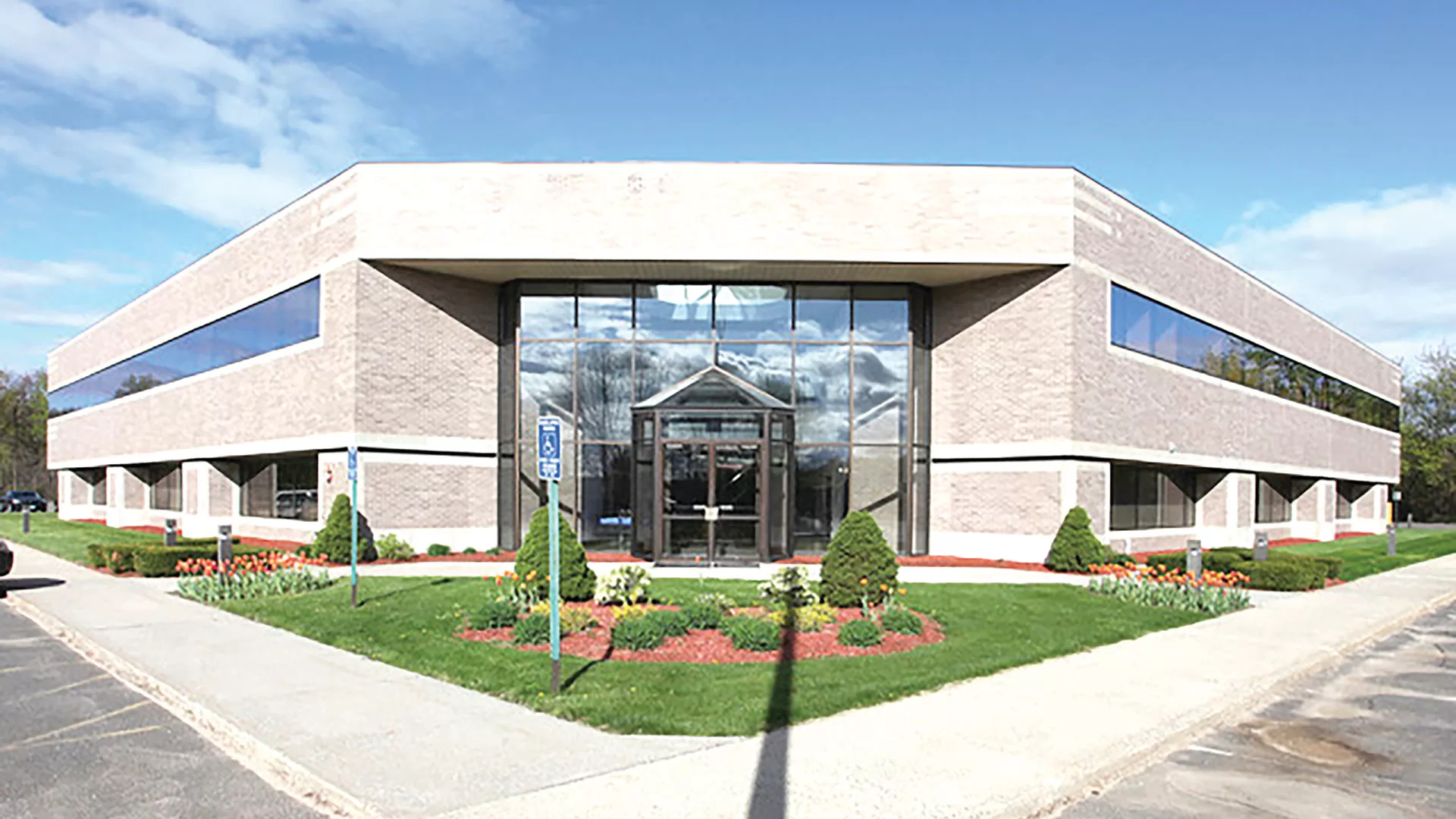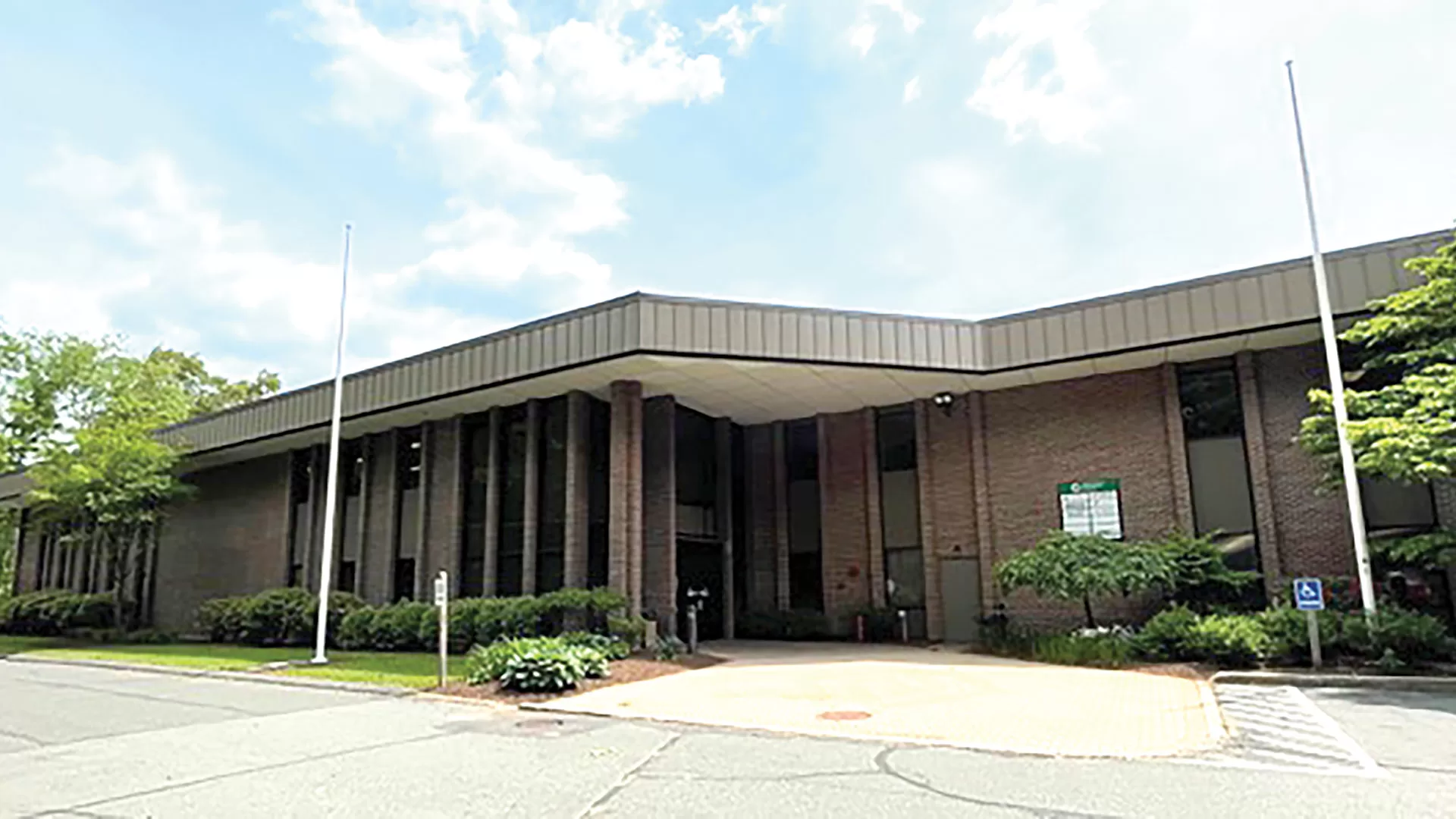
Development Associates Calls on Experience at a Challenging Time in Real Estate
Going by the Book

Development Associates President Ken Vincunas
Ken Vincunas says he’s long kicked around the idea of writing a book, one that would call on nearly 40 years of experience in the broad realms of development and commercial real estate.
He even has a working title: What’s the Rent?
That’s a simple question, one that property owners and leasing agents probably get asked every day, and hopefully several times a day, said Vincunas, president of Agawam-based Development Associates, which has a broad portfolio of office, retail, and industrial properties across Western Mass. and into Connecticut. But coming up with an answer is usually anything but simple.
“There have to be 20 subjective factors and no objective factors that go into this, and every time one of them comes up, you have to hope that you have the experience to know your market, know your tenant, know your building, know your rates, and try to make a deal that’s fair to everyone and keep the place leased,” he said, adding that COVID and its aftereffects, including the strong movement toward remote work and hybrid schedules, have only further complicated this equation, as we’ll see.
While addressing the rent question, Vincunas said his book — if and when he ever gets around to writing it — would also include some case studies, and there are many he can piece together involving the myriad scenarios he and others in this business face regularly.
“There are things that can’t possibly happen, but they do,” he explained. “Like this … you get no one for a space for six months, and then, you have two people. The one you want is slow and can’t quite figure out, but they’re a better prospect; the one you don’t really want is champing at the bit — ‘let’s go, we’re ready.’ What do you do? That’s probably happened 15 times to me; it’s really something.”
“There have to be 20 subjective factors and no objective factors that go into this, and every time one of them comes up, you have to hope that you have the experience to know your market, know your tenant, know your building, know your rates, and try to make a deal that’s fair to everyone and keep the place leased.”
As he talked about this book waiting to be written, Vincunas said he’s always calling on the years of experience that would go into it, especially at this time of challenge in commercial real estate and development, one he summed up quickly and effectively by saying, “we would look to acquire things if prices were fine or if we had a tenant lined up, but we’re in no hurry, and we’re going to hope for better times in the next seven to eight months.”
Elaborating, he noted that, on the development side, this is mostly a time to hit pause, noting that several colliding factors — from higher interest rates to the still-climbing costs of materials; from supply-chain issues to mandates for electric heat — are making this a difficult time to build.
And on the leasing side of the equation, it’s a time to tough out those aforementioned challenges, try to keep buildings full, and take advantage of the opportunities that present themselves. He’s doing all that at the Greenfield Corporate Center, where a large (as in 55,000-square-foot) vacancy, left by the Greenfield District Court when it moved back to downtown Greenfield and a new facility there, has been mostly backfilled.

The StubHub Building in East Granby, acquired by Development Associates in early 2020, is still vacant, but the company is optimistic this will soon change.
“We had counted on them staying — government contracts never come in on time,” he said with a laugh, referring to the construction of a new courthouse, which did come in on time, adding that the vacant space has been largely filled by an allergist, a CPA, the Sheriff’s Department, and other tenants, and the two buildings on the property are mostly occupied.
And Vincunas and his team are doing it at other properties as well, which are seeing those colliding forces from COVID, including businesses eyeing less space, in many cases, with fewer people coming to the office to work, but also different space as it comes on the market and deals can be made.
Meanwhile, DA, as his firm is called, is pushing ahead with some new projects, including a 55,000-square-foot office building in East Granby, Conn., known as the StubHub Building, which it acquired just prior to the pandemic in 2020, and nearby property — a five-acre parcel and a larger 19-acre parcel — that awaits development.
“The industrial market is exceedingly tight — purchase prices have doubled, at least. No one can afford to build with the high interest rates and the high cost of construction. Those who had industrial space in place could rent it for much more than they could have years ago.”
For this issue and its focus on commercial real estate, BusinessWest talked with Vincunas about everything from the state of the market, and the many factors that go into the current picture, to the manner in which he’s calling on all of his experience in these different — and challenging — times.
The Next Chapters
As he talked with BusinessWest about the Development Associates portfolio of existing properties and what might come next, Vincunas got up from his chair and retrieved a piece of paper thumbtacked to a board hanging next to his desk.
It was a timetable of sorts for the project in Northampton that has come to be called the Atwood campus. And he marveled that it has been 13 years since the former Clarion Hotel & Conference Center was demolished to make way for the office complex that sits there now.

The Atwood campus in Northampton is one of the many success stories scripted by Development Associates.
The Atwood campus is one of many success stories in the DA portfolio. The three buildings on the property are full, with tenants ranging from Cooley Dickinson Hospital and Clinical & Support Options to several professionals. And while the success of the complex would seem to welcome development of another office building on the remaining space within the footprint, current conditions, including ongoing questions about the long-term strength and resiliency of the office market, but also the soaring costs of building, dictate caution, Vincunas said.
“We’d love to do it, but you have to have some pre-leasing,” he told BusinessWest. “And how much is the rent a year and a half from now? When you commit to someone today, you say, ‘you’re going to take 30% to 40% of the building.’ Sure, we’ll start building it, hope we get some others, and carry on with you until we get them. But what’s the rent a year and a half from now? It’s not easy to know.”
These sentiments reflect the high levels of challenge and uncertainty, but also opportunity, that define the commercial real-estate market at present, he said, adding that some segments of this market are doing very well, especially industrial — again, because building new is not an attractive option, and also because the work done at these facilities, be it manufacturing or warehousing, can’t be done remotely.
“So the industrial market is exceedingly tight — purchase prices have doubled, at least,” he said, noting that the same is true of lease rates. “No one can afford to build with the high interest rates and the high cost of construction. Those who had industrial space in place could rent it for much more than they could have years ago.”
Meanwhile, the office market is certainly slower, but there is movement as leases expire and business owners mull options, which bode well for properties like the StubHub Building, which remains vacant but may soon be landing a federal agency, said Vincunas, adding that DA acquired the property knowing it would take some time to lease it out, and COVID only exacerbated that challenge.

Development Associates has been successful in backfilling space at the Greenfield Corporate Center.
“It’s a very solid, very attractive building, and we know it’s going to work based on the price that we paid,” he said, adding that those same sentiments apply to the five-acre parcel just down busy Route 20, where DA is envisioning a a retail complex at that location, as well as the larger, 19-acre parcel. In both cases, the company can afford to be patient.
“I’m bullish on that whole area,” he said. “There are 400-plus apartments being built within three miles, so that whole area, in our estimation, is going to take off.”
The Plot Thickens
As he assessed the current office market, Vincunas said that, despite the convictions of many in this business that workers will eventually return to the office because companies function more efficiently if people are all in one place, the reality is that remote work and hybrid schedules are very likely here to stay.
That means most of those same businesses have decisions to make as leases expire, about how much space they need and where they want to be. And for those trying to keep buildings full, or as full as possible, it means working hard with both existing tenants, to keep them in some capacity, while also trying to attract those using their own expiring leases to explore the many other opportunities presenting themselves.
He’s seeing that at several of the DA properties, including Greenfield, where that successful backfilling is ongoing, and also 200 Silver St. in Agawam, where the company is trying to fill a vacancy left by a departing fitness center.
“Overall, you have to know your market and try to strike a balance. People don’t want to move, and people have options. And each situation is different. If you know the people love the location and the building, they might feel more strongly about staying where they are, and you work with them to make that happen.”
“We’re entertaining two companies in the insurance business; one wants to get out of Springfield, and one wants to consolidate its offices,” he said, adding that these are some of the forces impacting the market at present, ones that create uncertainly and volatility, but also opportunities, especially in smaller communities and smaller office facilities.
But there are risks everywhere, he added quickly, noting that, across the broad office market, the trends toward consolidation and putting fewer people in smaller spaces cast long shadows over the market.
To manage these sea changes, real-estate firms must call on their experience and handle each case individually.
“Overall, you have to know your market and try to strike a balance,” Vincunas said. “People don’t want to move, and people have options. And each situation is different. If you know the people love the location and the building, they might feel more strongly about staying where they are, and you work with them to make that happen.”
Returning to that aforementioned book he’s looking to write and its unofficial title, he reiterated that each case is different and each time is different, and companies like Development Associates must adjust to the conditions at that moment in time.
“When it comes to office space, you’re either in a strong position or a weak position, and you have to respond accordingly,” he said. “It’s the same as ever.”





